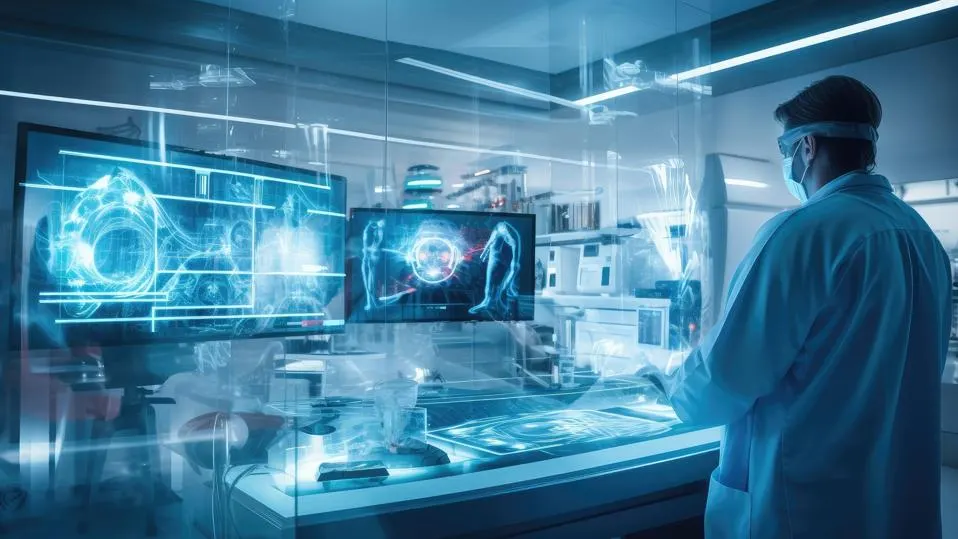Although my work usually involves advising businesses on changes and trends that are just around the corner, sometimes it’s also interesting to look a little further ahead.
If, as Harold Wilson said, a week is a long time in politics, then ten years is an eon in technology. In reality, anything could happen between now and 2035 to send progress hurtling off in completely unexpected directions.
But ignoring the entirely unpredictable for now and focusing on where developments on the horizon today could take us in the longer term can still yield some thought-provoking and perhaps slightly scary insights.
Today, artificial intelligence promises to accelerate the pace of innovation in every field, and breakthroughs in biotechnology look set to rewrite the rules of nature. These two technologies will be the foundation of the most exciting and important trends of the next ten years. So here are my predictions about what this could mean for healthcare and wellness at the halfway point of the next decade.
Bioprinting – Organs On Demand
By 2035, 3D printing technology could be sophisticated enough that we are able to create tissue and even entire organs on demand. This will have two major benefits for human health: Firstly, it will solve the persistent shortage of available donors needed for transplant patients. Secondly, 3D-printed organs will be created specifically to suit the genetic makeup of the recipient, minimizing the chance of it being rejected by their body. This will also reduce the need for immunosuppressive drugs that can cause further complications, such as weakening resistance to disease.
Scientists are already able to bioprint
simple tissues such as skin and cartilage, and even functional parts of a human heart, for research purposes, by mixing bioinks with cells. Within ten years' time, this technology could be sophisticated enough to revolutionize the field of organ transplantation.
The Gene Genie
Thanks to the science of genomics and the application of gene editing, many commonplace diseases may have been eradicated once and for all by 2035, bringing huge benefits for human health and wellbeing. Hereditary diseases such as muscular dystrophy, Huntington’s disease, cystic fibrosis, Alzheimer’s disease, sickle cell anemia and many forms of cancer and heart disease could have been eradicated if technologies like CRISPR have lived up to the promise that researchers today believe they hold. And personalized medicine, tailored to our individual genetic makeup, will improve patient outcomes for many more diseases, infections and illnesses.
These treatments are currently experimental and expensive. However, over the next decade, they are likely to become more widespread and affordable. As their impact on healthcare grows, they will help cut costs in many other areas of medicine associated with remedial care.
The Virtual Healthcare Revolution
Over the next ten years, it will become increasingly unnecessary for us to take a trip to the doctor or spend time in a hospital. AI-driven predictive healthcare will diagnose and preventively treat many illnesses and conditions before we even notice them. When we do need human intervention, it will be just as effective, and far more efficient, to treat us in our homes as telemedicine, virtual hospitals and remote healthcare revolutionize patient care.
This could take place in immersive virtual reality environments, where doctors can simulate treatments on an accurate digital twin of the patient in order to determine the best outcomes. Even surgery will be carried out remotely or by autonomous robots capable of operating more accurately and precisely than the steadiest human hand.
The Changing World
Adapting the global provision of healthcare to cope with environmental, societal and demographic changes around the world will be an urgent priority by 2035.
Developed nations are facing up to the challenges of an aging population while emerging economies are experiencing rising birth rates. Simultaneously, the world will be forced to deal with the healthcare impact of climate change, including forecasted shortages of food and water, new pandemics and issues such as the emergence of antibiotic-resistant organisms. All of this means that healthcare needs will shift and evolve rapidly in ways that we haven’t had to deal with in the past. Technologies, including those discussed here, will play their part in providing solutions. However, political efforts will also play a critical role in the dramatic changes needed in the planning and delivery of healthcare.
Approaching Immortality?
Okay, let’s pick one that’s perhaps a little more far-fetched for the last one. Given the progress being made into slowing and possibly even reversing the human aging process, in ten years’ time, are we getting close to solving perhaps the ultimate healthcare challenge—a cure for death itself?
Perhaps this will come about through some of the genetic engineering processes we’ve covered, for example, by isolating and editing genes associated with aging or degenerative, age-related diseases. Other ongoing work involves extending the lifespan of telomeres – an element of chromosomes that shortens as cells divide over our lifetimes and has been linked to longevity. New developments in stem cell science could open the path to repairing and replacing damaged tissue that contributes to human mortality. Or perhaps it will be nanotechnology that provides the answer, with microscopic machines able to replicate cell functions at a molecular level?
While it may seem unlikely today, the one thing we can say about the future with certainty is that anything could happen.







Social Media